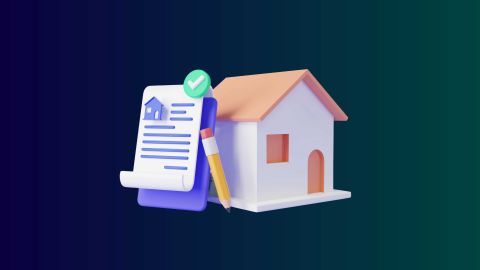Reasons to Issue a Notice Under Section 148
Notices under Section 148 are sent when the tax officer has reason to believe income has not been fully reported. Some of the most common reasons include:
- Income not disclosed
If someone earns money—for example, from freelance work or property rental—and does not report it in their return, the department may reopen the case.
- Transactions not properly reported
If large financial dealings (like cash sales or investments) are missing from the return or under-reported, a reassessment may be initiated.
- Unexplained deposits or purchases
If bank statements show large cash deposits that don’t match the declared income, or if there are high-value purchases without explanation, it can lead to a notice under Section 148.
- Information from other departments
Sometimes, government agencies share financial information with the tax department. If the data shows that income declared by the taxpayer is much lower than the actual income, it may prompt reassessment.
Each notice must be based on credible evidence and follow proper procedures to ensure the taxpayer’s rights are respected.
Time Limit to Issue a Notice Under Section 148
The time limit of Section 148 of Income Tax Act is outlined in the table below:
Undeclared income bracket
|
Time limit
|
Below Rs. 50 lakh
|
Up to 3 years from the end of the assessment year
|
Exceeds Rs. 50 lakh
|
Beyond 3 years but up to 10 years
|
Beyond this threshold
|
Notices beyond 10 years cannot be issued
|
When can a notice be issued under Sec 148?
A Section 148 notice can only be issued if the AO has concrete evidence that some income has not been assessed. However, before sending the notice, they must follow the procedures in Section 148A, which includes giving the taxpayer a chance to explain their case. The timeline for issuing such a notice is limited to either three or ten years from the end of the relevant assessment year, depending on how much income is believed to have been hidden or missed.
What happens if you do not respond to Section 148?
If you ignore a Section 148 notice, there can be serious consequences.
Ex-parte assessment
If you don’t respond on time, the AO can finalise your assessment using whatever data they already have. This is called an ex-parte assessment. Since your input is not considered, it may result in a higher tax bill.
Penalties and interest
Not replying to the notice may lead to penalties. Under Section 271(1)(b), the AO may impose a fine for failing to respond. Additionally, interest will be charged on unpaid tax starting from the date it was originally due.
Legal action
If the AO believes you have deliberately hidden income, legal proceedings can begin. In serious cases, you could face prosecution. This might include jail time ranging from six months to seven years, along with fines.
It’s best to handle such notices promptly. If the notice involves large sums or complex transactions, it’s a good idea to consult a financial advisor or tax expert to manage your case properly.
Who can issue a notice under Section 148
Only the assigned Assessing Officer (AO) can issue a notice under Section 148. The Supreme Court has clarified that such notices must follow proper legal steps and be backed by strong evidence.
How to deal with a Section 148 notice
- Confirm the notice is genuine: Go to the Income Tax e-filing website. Use the "Authenticate Notice/Order Issued by ITD" tool found under "Quick Links".
You can check the notice by entering:
- The Document Identification Number (DIN) with your mobile number, or
- Your PAN, assessment year, document type, issue date, and mobile number.
- Once submitted, you will receive an OTP. Enter this to verify the notice.
- Respond on time: It’s crucial to reply before the deadline to avoid penalties or further notices.
- Submit relevant documents: Gather and send financial documents supporting your income as declared.
- Seek help if needed: If the notice seems complicated, or involves large amounts, it’s smart to speak with a tax advisor for proper guidance.
Duties and rights of the assessed after the receipt of notice under Section 148
Duties
The taxpayer must reply within the time limit mentioned in the notice and provide all requested documents and clarifications.
Rights
You have the right to ask for a copy of the documents or evidence used to issue the notice. You can also challenge the notice if it appears to be wrongly issued. Professional tax advice is recommended if you're unsure.
Implications of Section 148
Understanding the implications of Section 148 is essential for taxpayers to avoid potential pitfalls:
- Financial liability: Reassessment can lead to an increase in tax liability if the reassessment reveals additional taxable income. This can significantly impact an individual’s financial planning.
- Interest and penalties: In addition to the increased tax liability, taxpayers may also be subject to interest on the outstanding amount and potential penalties for non-compliance.
- Impact on home loans: For individuals availing home loans, a reassessment can affect their creditworthiness and repayment capacity. Financial institutions often consider tax compliance while assessing loan applications. Therefore, taxpayers must ensure timely and accurate filing of returns to avoid complications. If you're planning to purchase property or need funds for home-related expenses, having proper tax documentation is essential for loan approval. Check your eligibility for a home loan from Bajaj Finserv today. You may already be eligible, find out by entering your mobile number and OTP.
Reasons for escaped income
Tax authorities may invoke Section 148 for various reasons, including:
- Underreported income: Taxpayers may inadvertently underreport their income due to lack of awareness or misunderstanding of tax laws.
- Non-disclosure of assets: Failing to disclose income from assets, such as properties or investments, can lead to reassessment.
- Fraudulent activities: Engaging in tax evasion or providing false information can trigger the application of Section 148.
- Real estate transactions: Involvement in real estate transactions without proper disclosure can raise red flags for tax authorities, leading to scrutiny under Section 148.
Whether you're buying your first home or investing in property, proper financial planning includes securing the right home financing option. Check your loan offers with Bajaj Finserv for competitive rates starting at 7.45%* p.a You may already be eligible, find out by entering your mobile number and OTP.
How to respond to a Notice under Section 148
Receiving a notice under Section 148 can be stressful, but understanding how to respond can alleviate concerns:
- Immediate action: Upon receiving the notice, do not delay in responding. Timely action is critical to avoid adverse consequences.
- Gather documentation: Collect all relevant documents, such as income statements, tax returns, and any other supporting evidence that substantiates your claims.
- Consult a tax professional: Engaging a qualified tax consultant or chartered accountant can provide valuable insights and assistance in preparing your response and navigating the reassessment process.
- Clarify discrepancies: If there are discrepancies or misunderstandings, clearly explain them in your response to the assessing officer, providing all necessary evidence.
Best practices to avoid reassessment under Section 148
To minimize the risk of reassessment under Section 148, taxpayers should adopt certain best practices:
- Maintain accurate records: Keep thorough records of all income, expenses, and financial transactions. This practice simplifies tax filing and reduces the risk of discrepancies.
- File returns timely: Ensure timely filing of income tax returns, adhering to all compliance requirements. Delayed filings can trigger scrutiny from tax authorities.
- Full disclosure: Always disclose all sources of income, including rental income from properties, capital gains from investments, and any other income sources.
- Consult professionals: Regular consultations with tax advisors or accountants can help ensure compliance with tax laws and prevent issues related to escaped income. When planning major purchases like a home, transparency in financial records also helps secure better loan terms from lenders. Check your eligibility for a home loan from Bajaj Finserv with approval in just 48 hours*. You may already be eligible, find out by entering your mobile number and OTP.
Section 148 of the Income Tax Act is a critical component of the Indian taxation system, aimed at ensuring transparency and accountability. Understanding its implications is vital for taxpayers, especially those involved in financial products, real estate transactions, or home loans. By adopting best practices, maintaining accurate records, and seeking professional guidance, taxpayers can navigate the complexities of Section 148 effectively.
Reopening of income tax assessment cases
The Union Budget 2021 introduced a shorter time limit for reopening tax assessment cases. Instead of six years, the department can now reopen cases only up to three years from the end of the assessment year. However, if the unreported income is more than Rs. 50 lakh, the case may still be reopened up to ten years. In all such cases, the AO must explain in writing why any objections made by the taxpayer have been rejected.
Conclusion
Knowing how Section 148 works helps taxpayers stay prepared and avoid penalties. If you receive a notice, don’t ignore it—respond promptly and provide the correct documents. As the courts have noted, reassessment must follow legal procedures to protect your rights. If you are unsure how to respond or if the notice involves complex transactions, consider speaking with a tax professional. Being proactive and transparent can help reduce your tax burden and keep your records in order.
Maintaining good tax compliance also strengthens your profile when applying for major financial products like home loans, helping you secure your dream property with confidence. Check your loan offers with Bajaj Finserv for loans up to Rs. 15 Crore* at attractive interest rates. You may already be eligible, find out by entering your mobile number and OTP.
Category
|
Relevant URLs
|
Income Tax Deductions
|
Section 80CCD(2), Section 80CCD(1B), Section 80CCD1, Section 80CCE, Section 80DD, Section 80DDB, Section 80E, Section 80EEA, Section 80G, Section 80GG, Section 80GGC, Section 80RRB, Section 80TTA, Section 80U
|
Salary & Allowance Related Sections
|
Section 16(ia), Section 16(ii), Section 17, Section 17(1), Section 10(13A), Section 89
|
Property & Capital Gains Tax
|
Section 24B, Section 54B, Section 54GB, Section 54F, Section 54
|
TDS & Withholding Tax
|
Section 194H, Section 194IA, Form 26QB
|
Income Tax Compliance & Notices
|
Section 139(9), Section 143(1), Section 148, Section 179, Section 56(2)(x)
|
SARFAESI Act (Loan Recovery & Security Enforcement)
|
Section 13, Section 13(2), Section 13(4), Section 14
|
Income Tax Rates
|
Income Tax Slab
|






